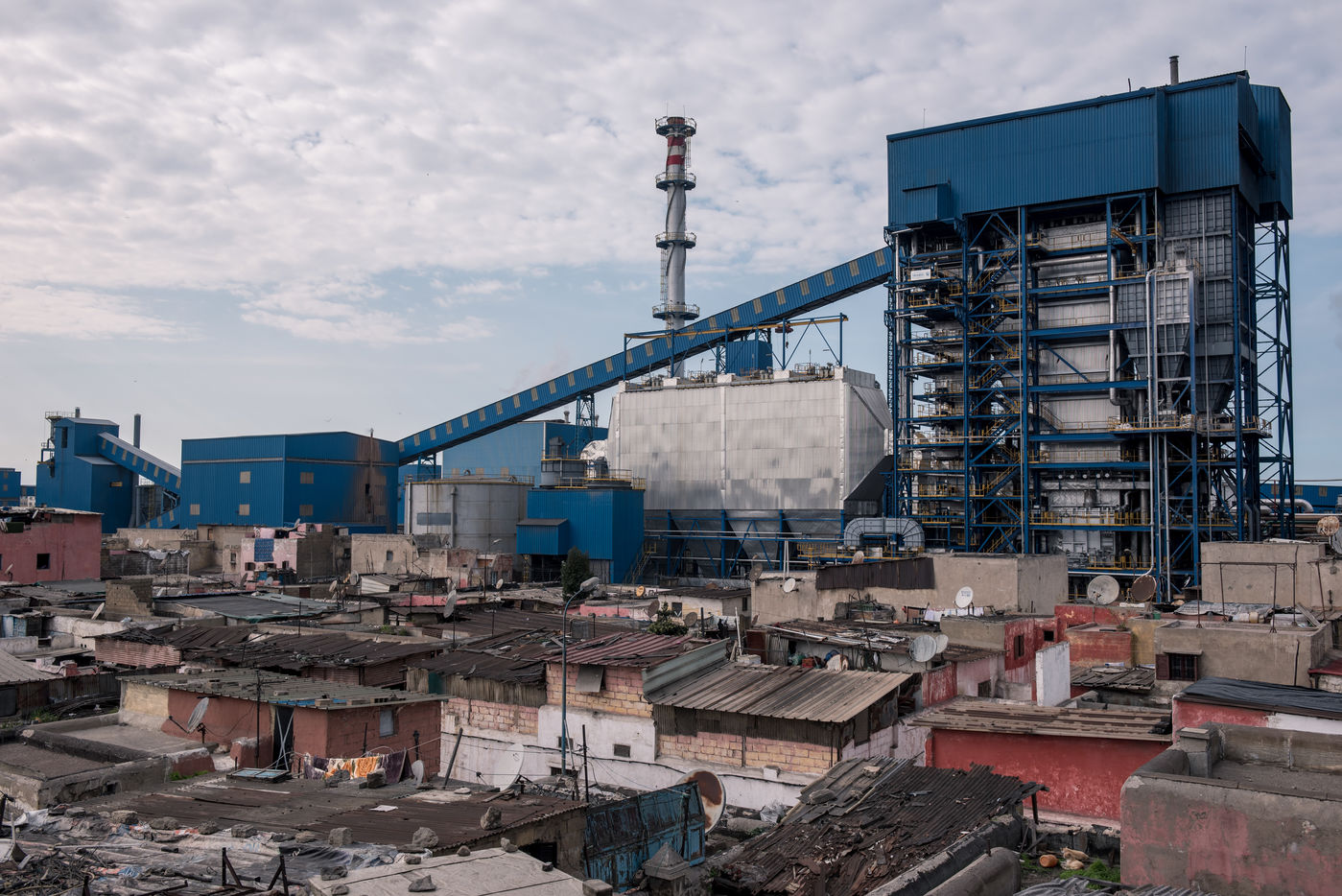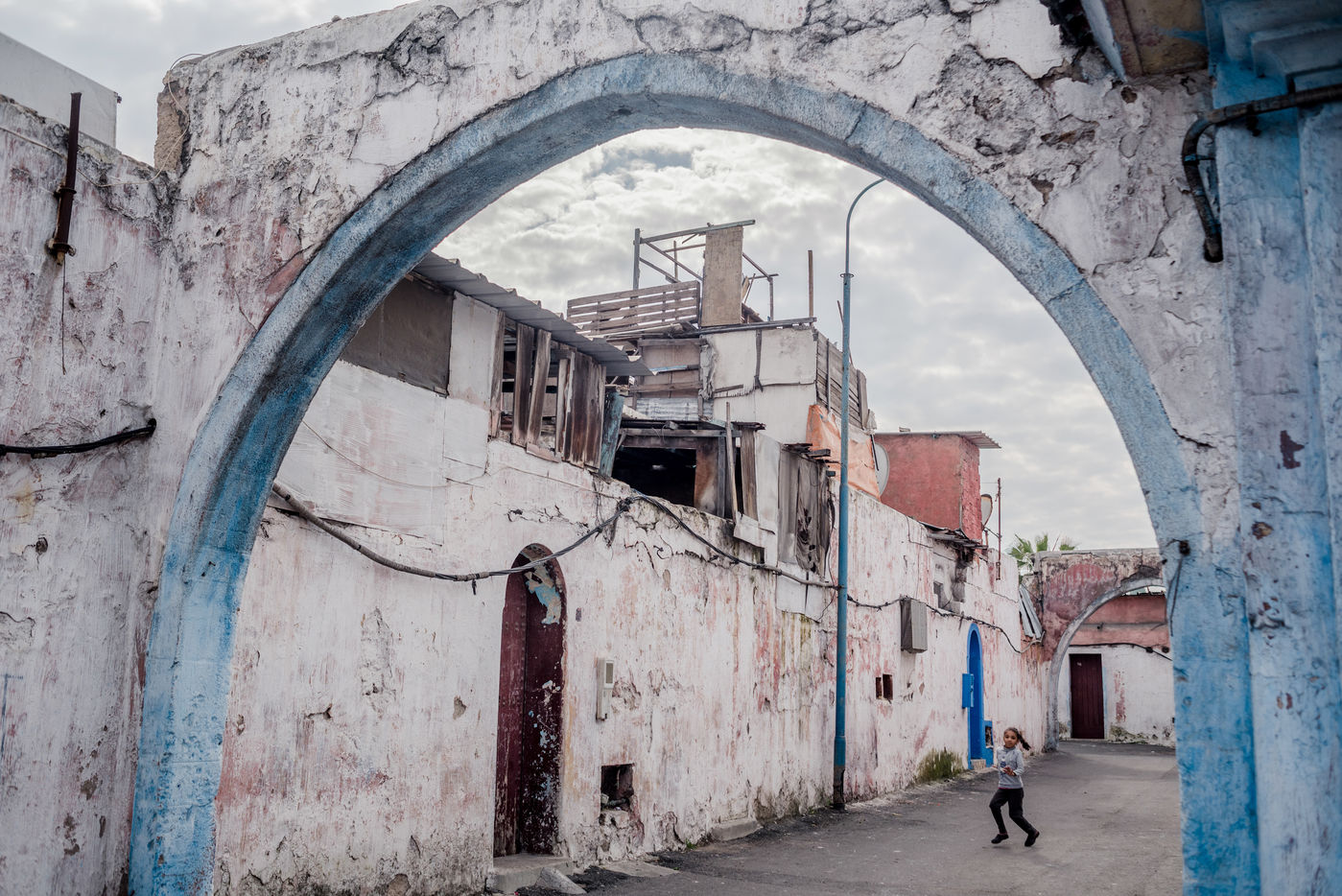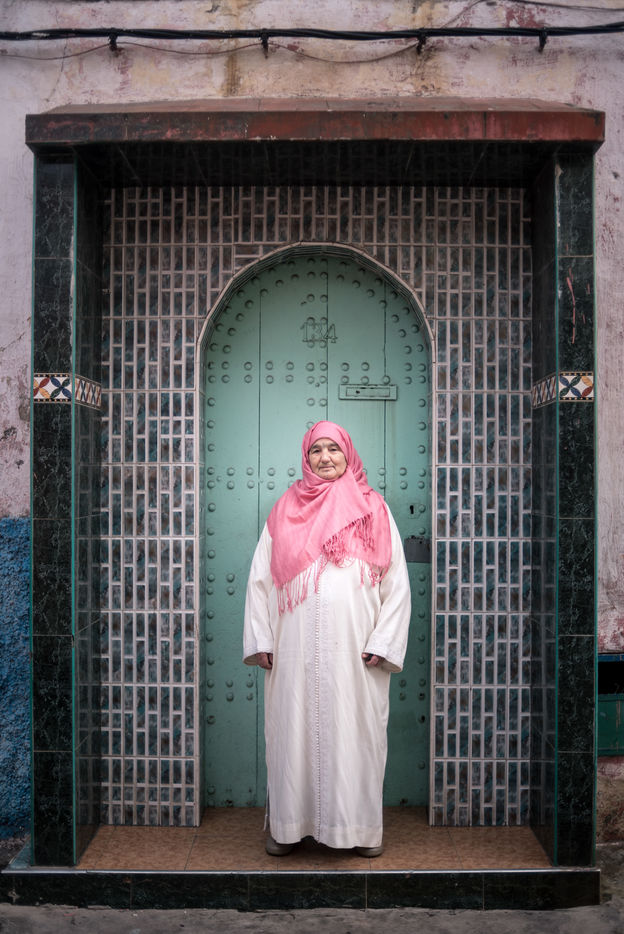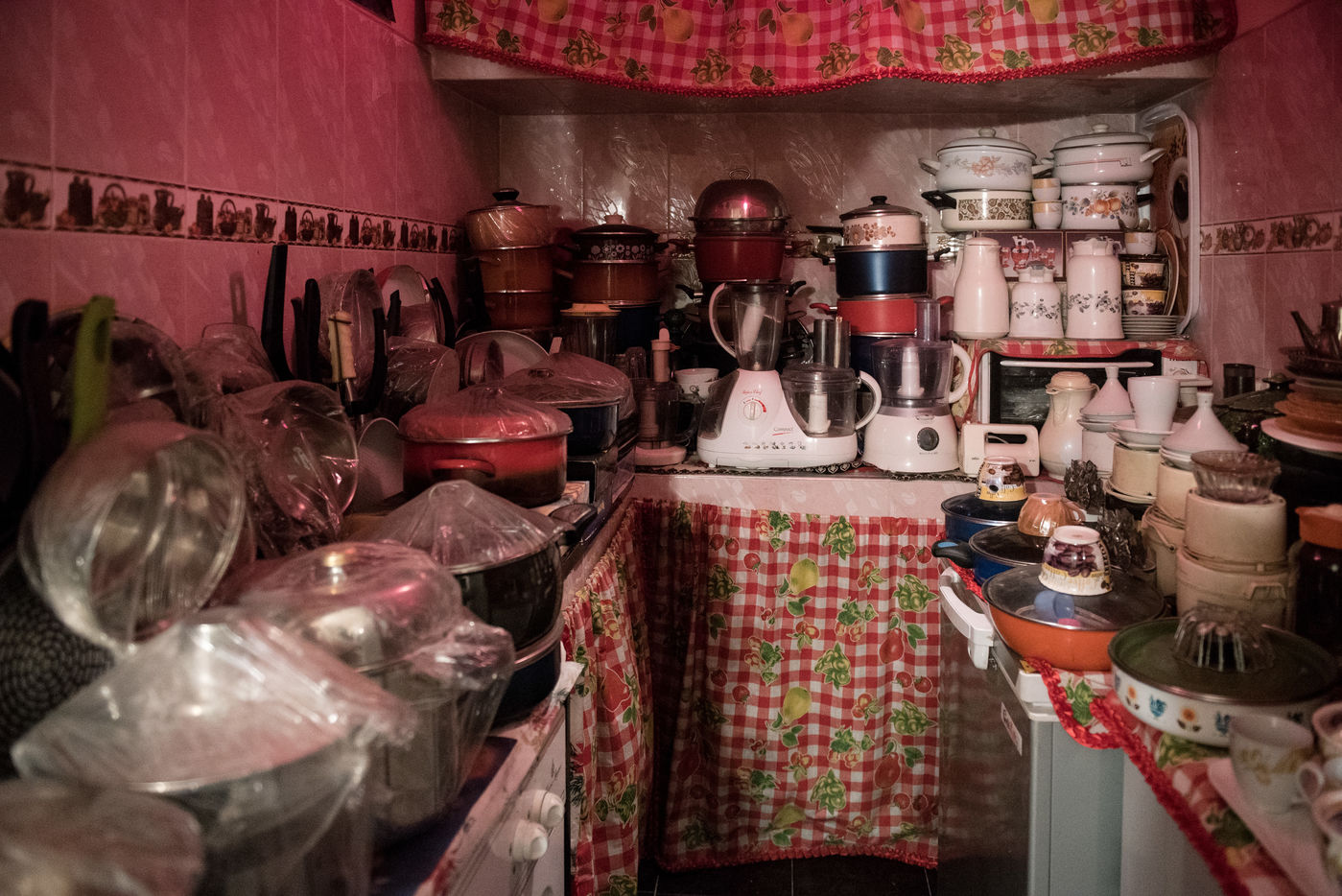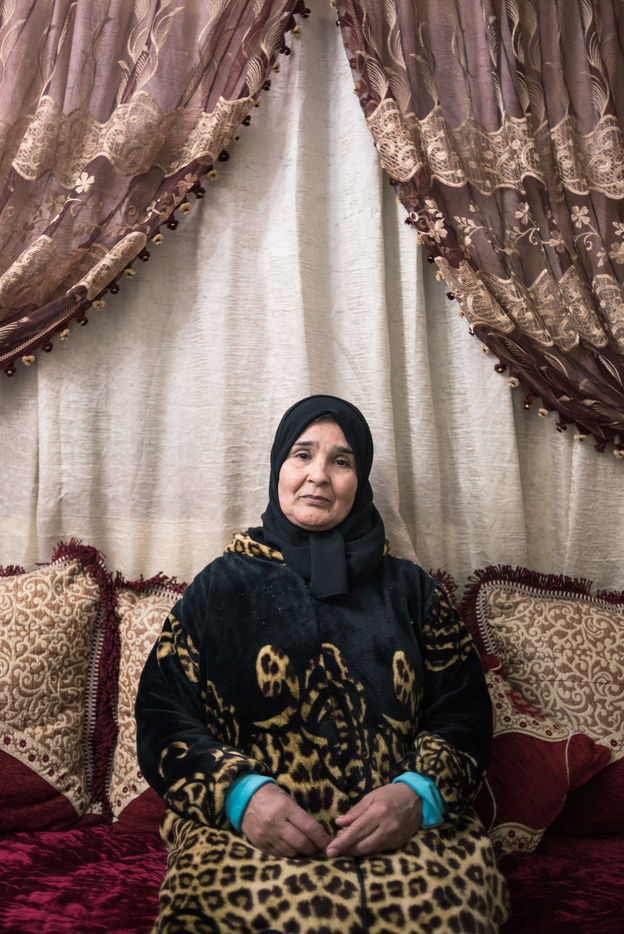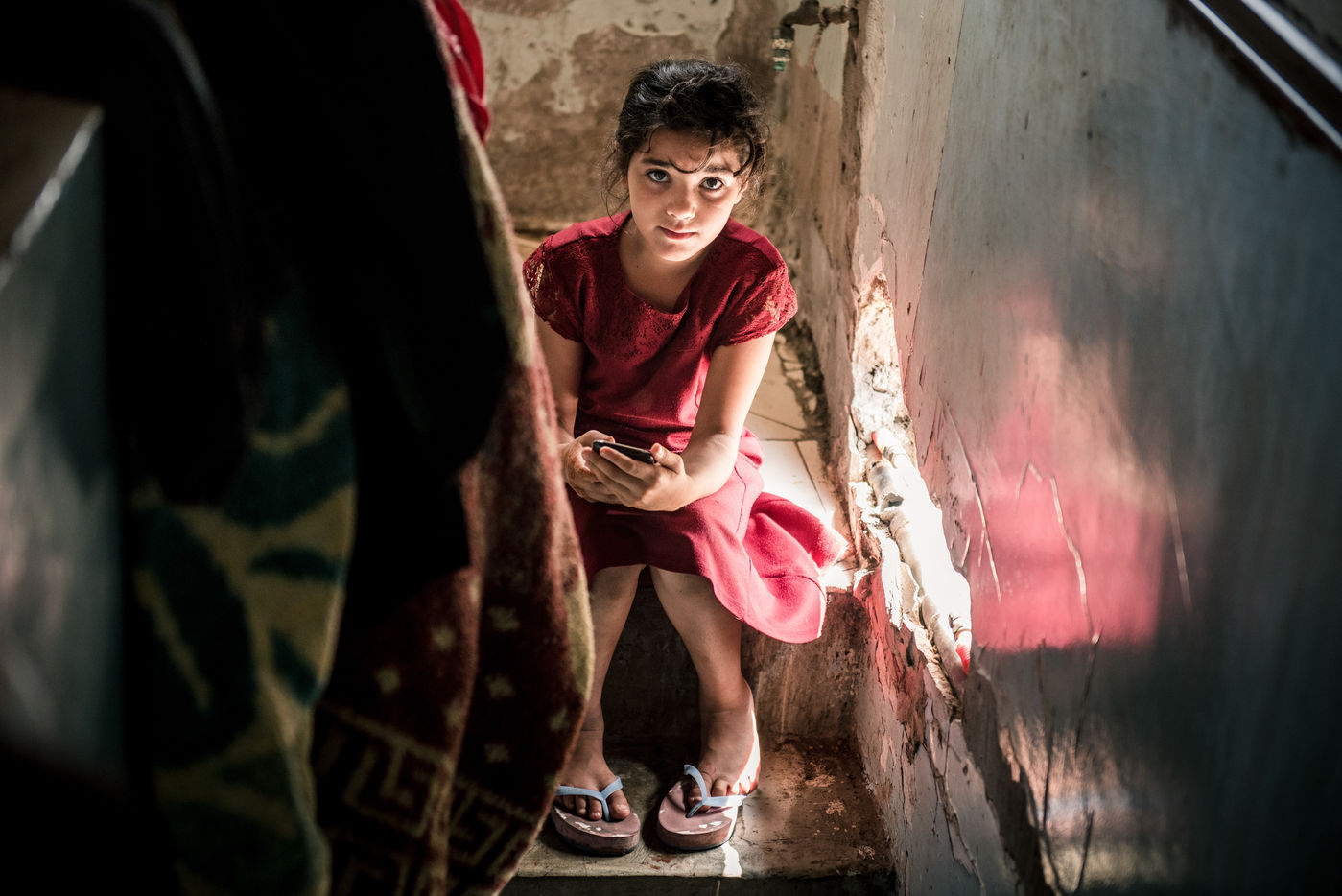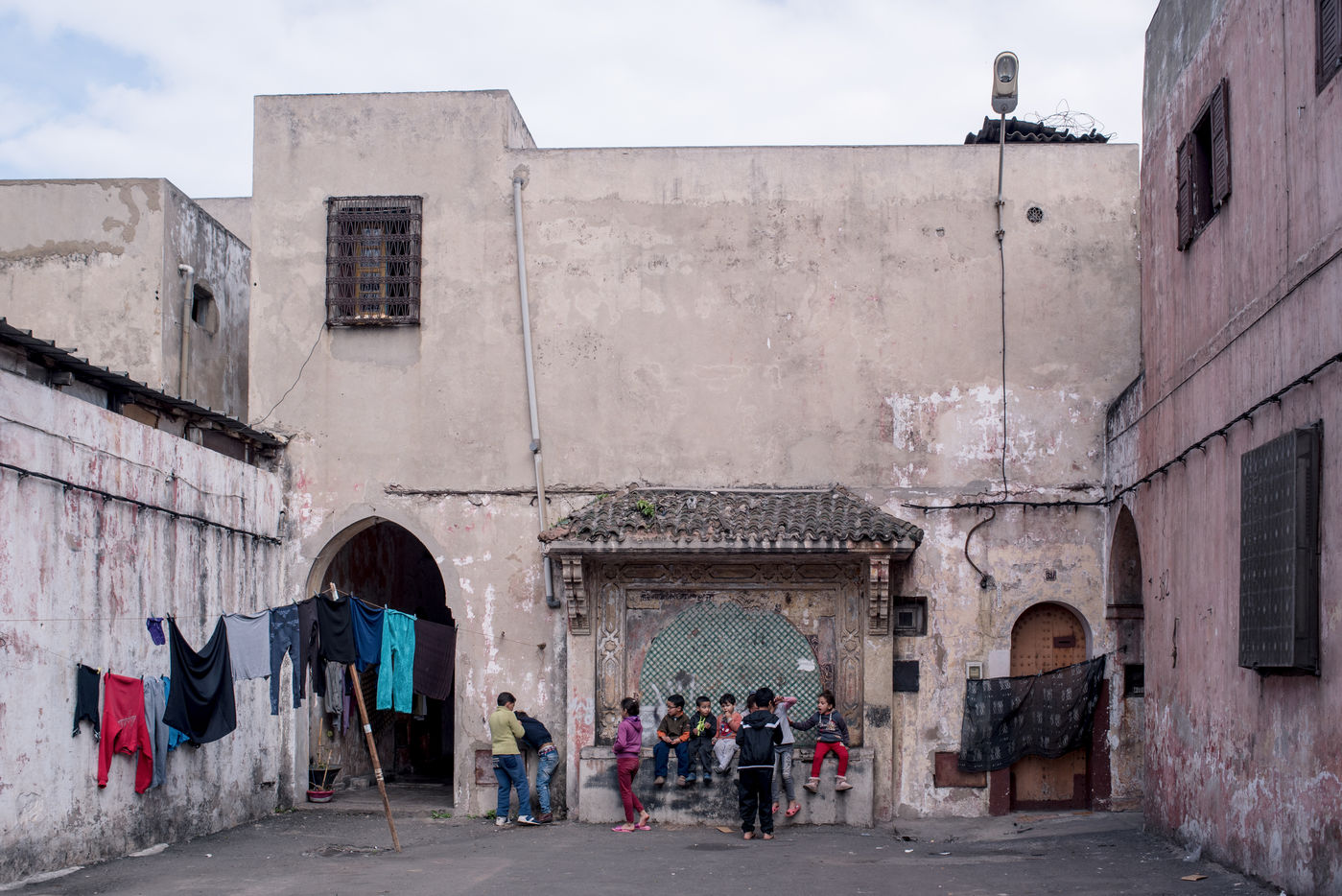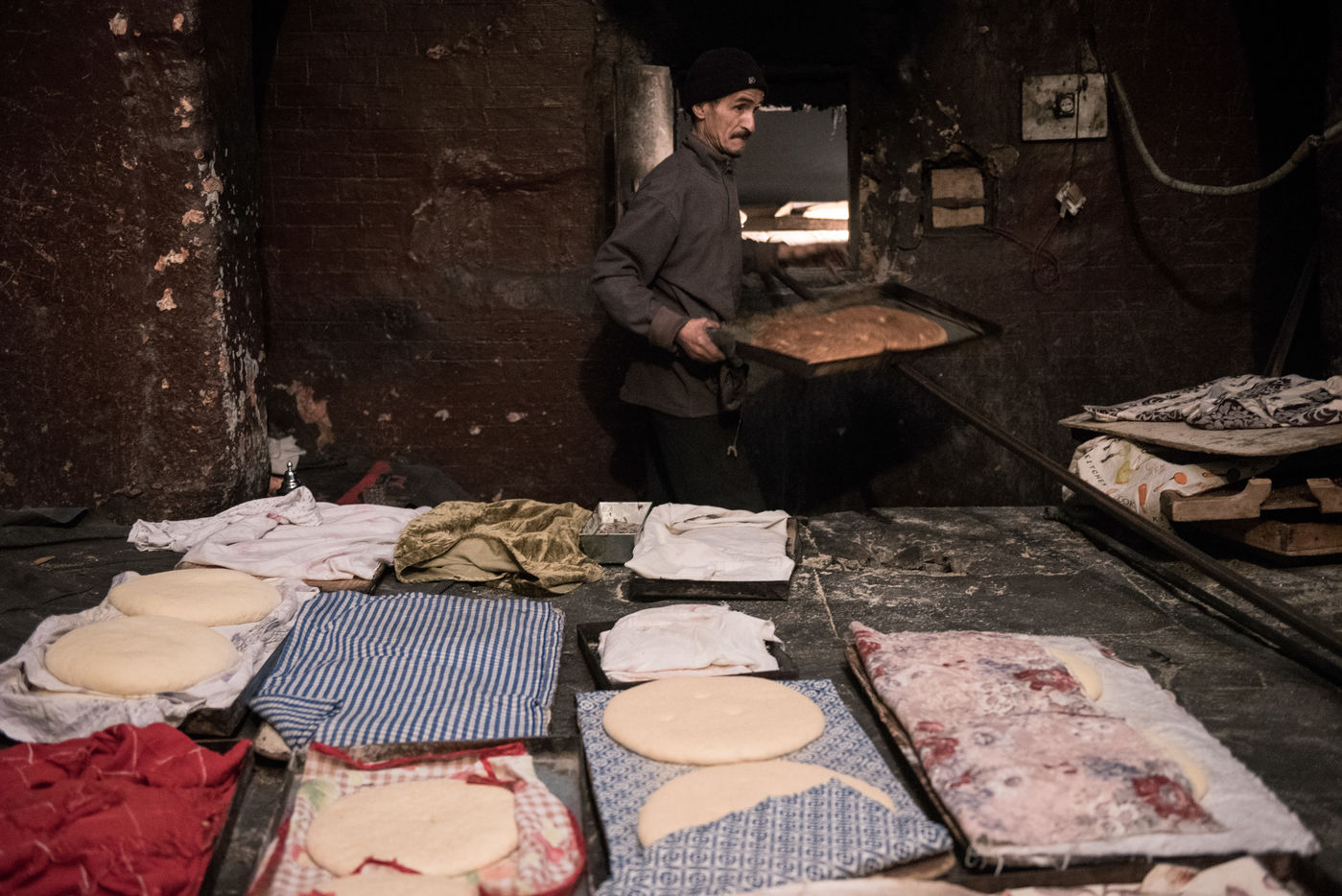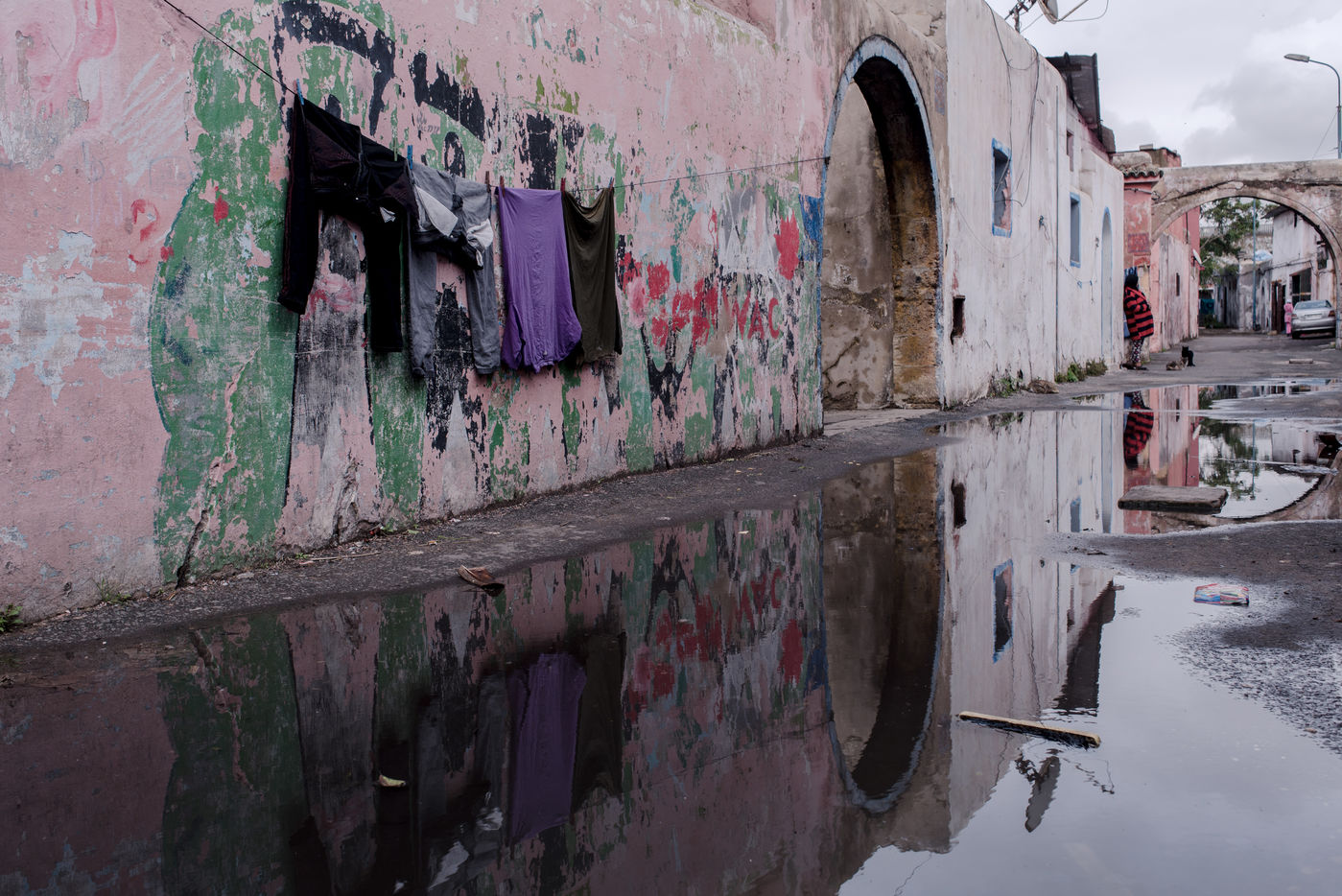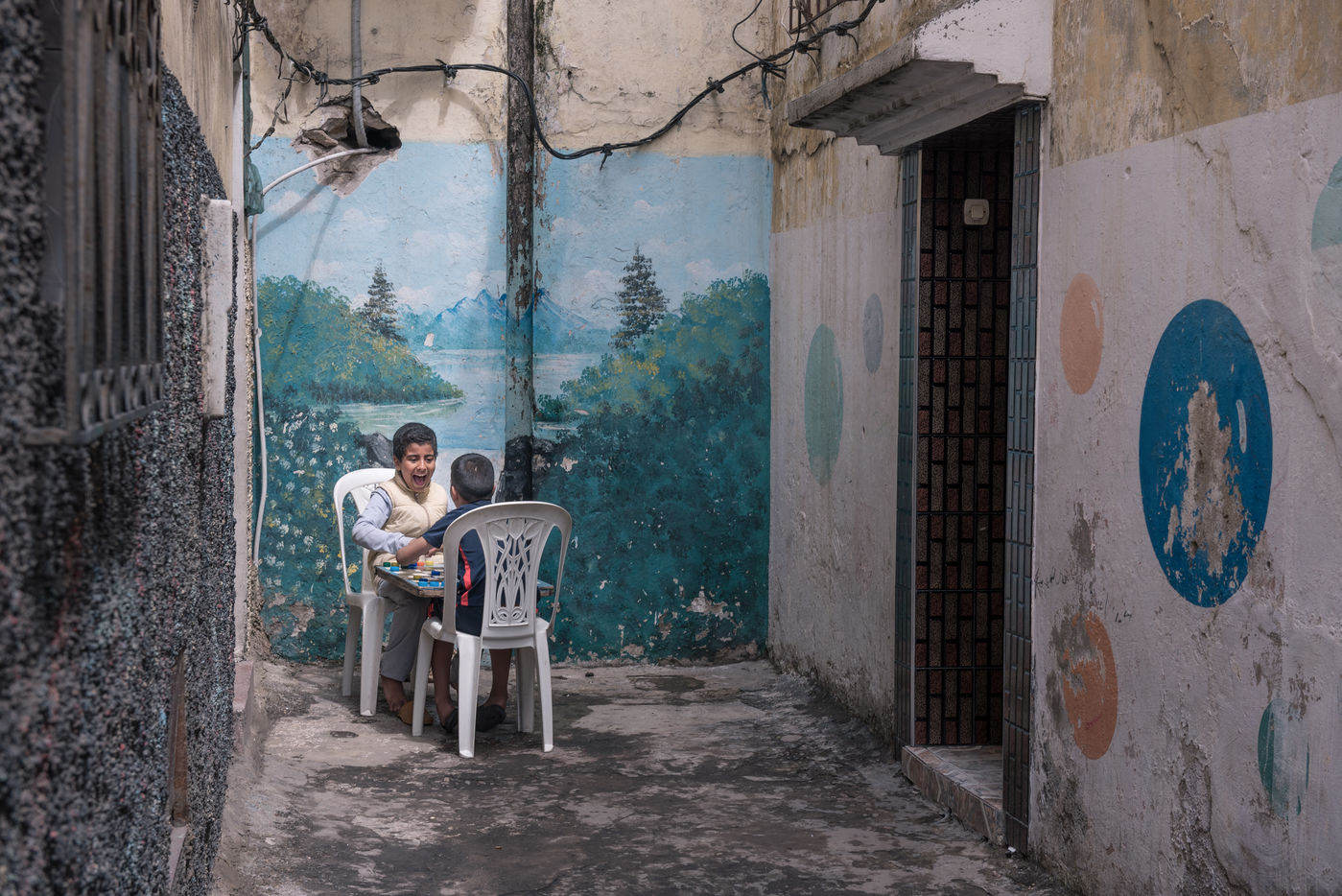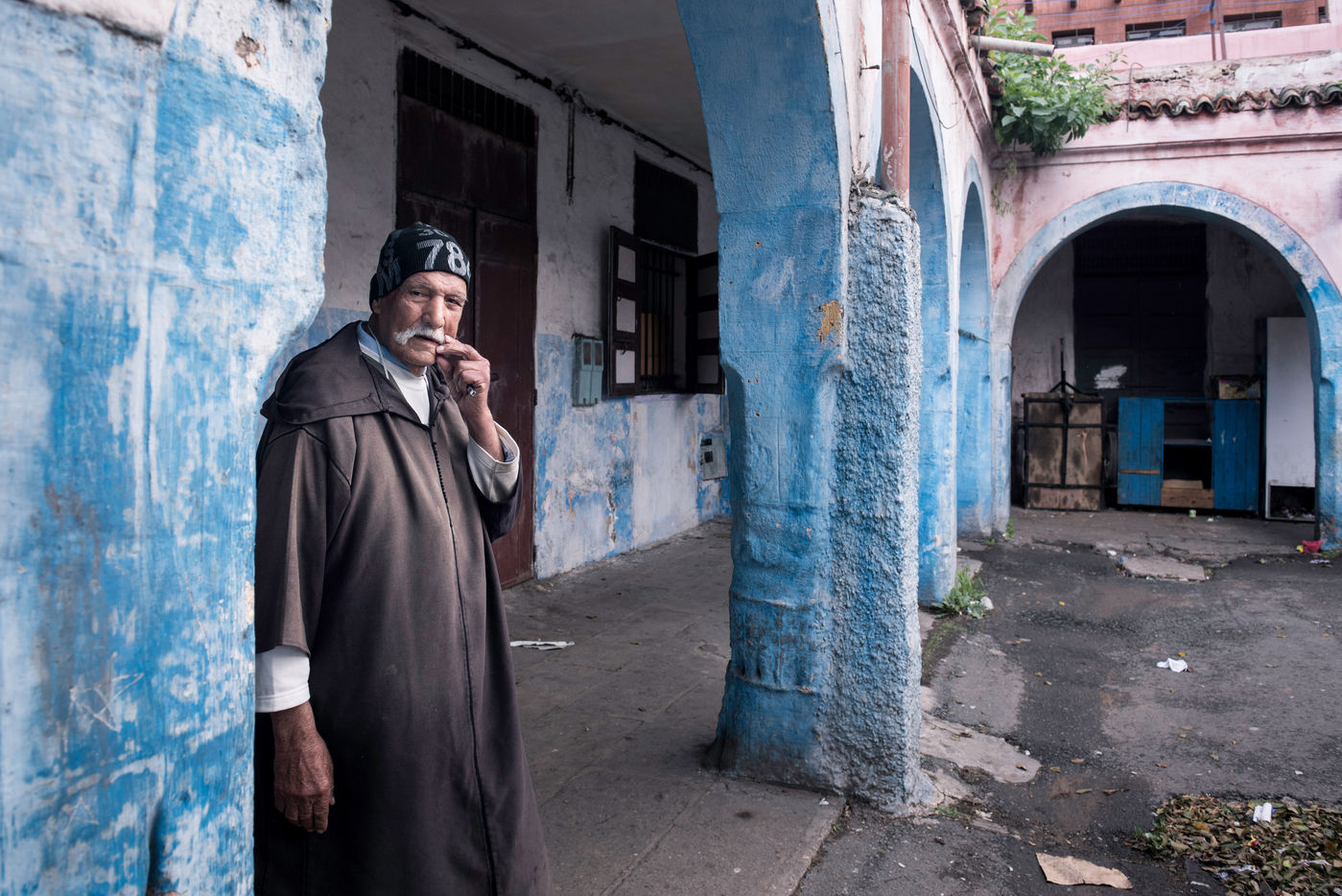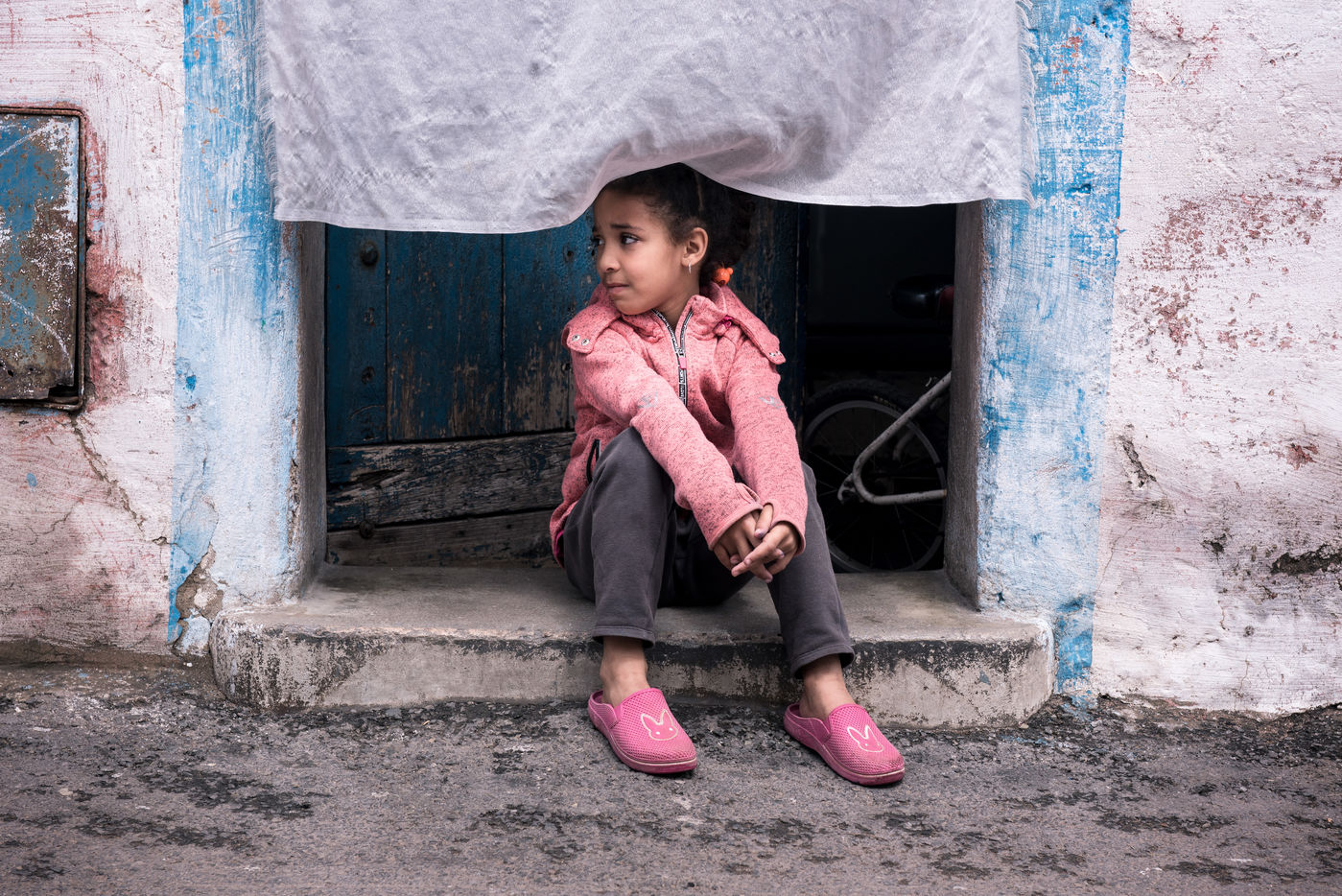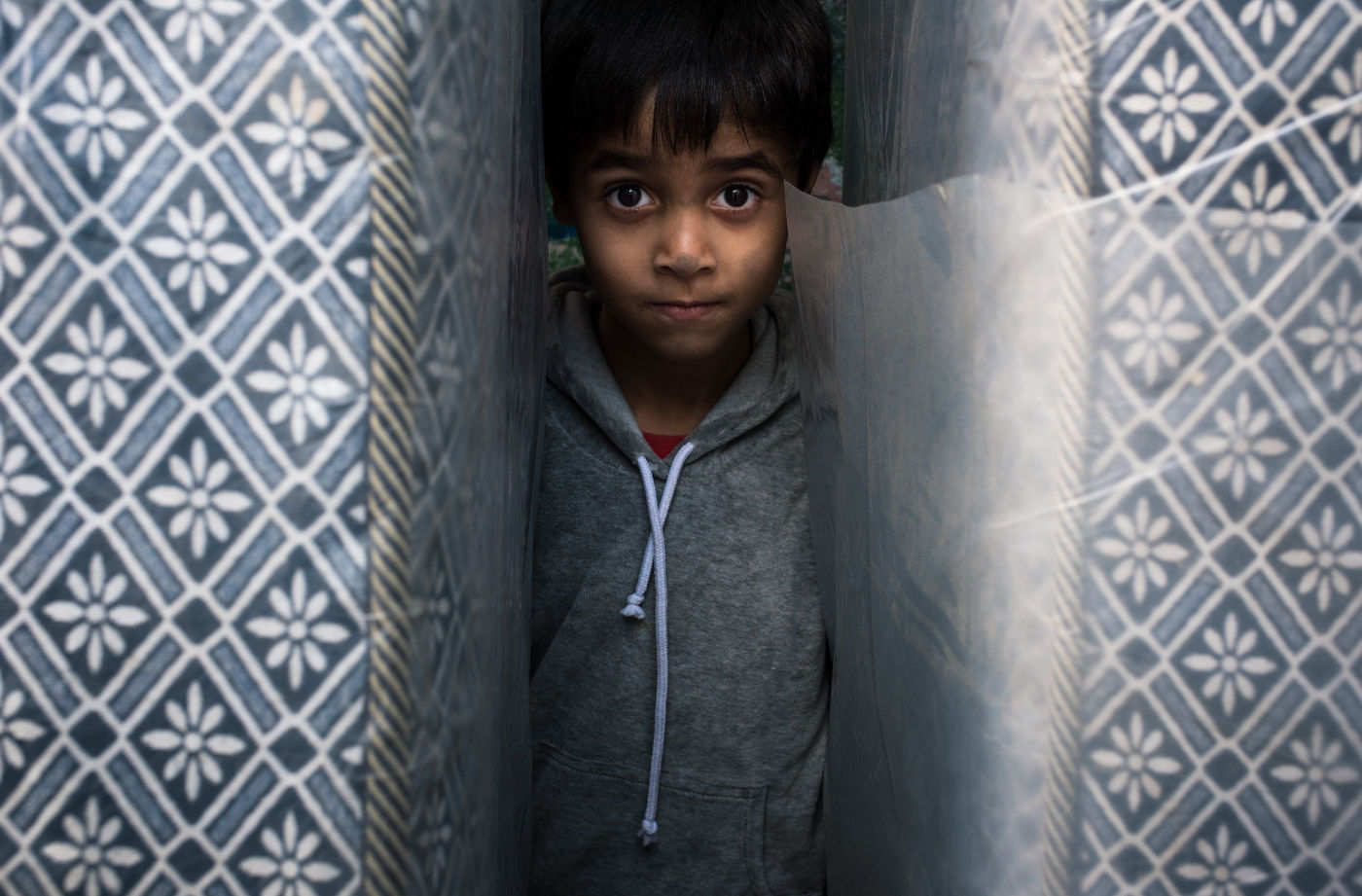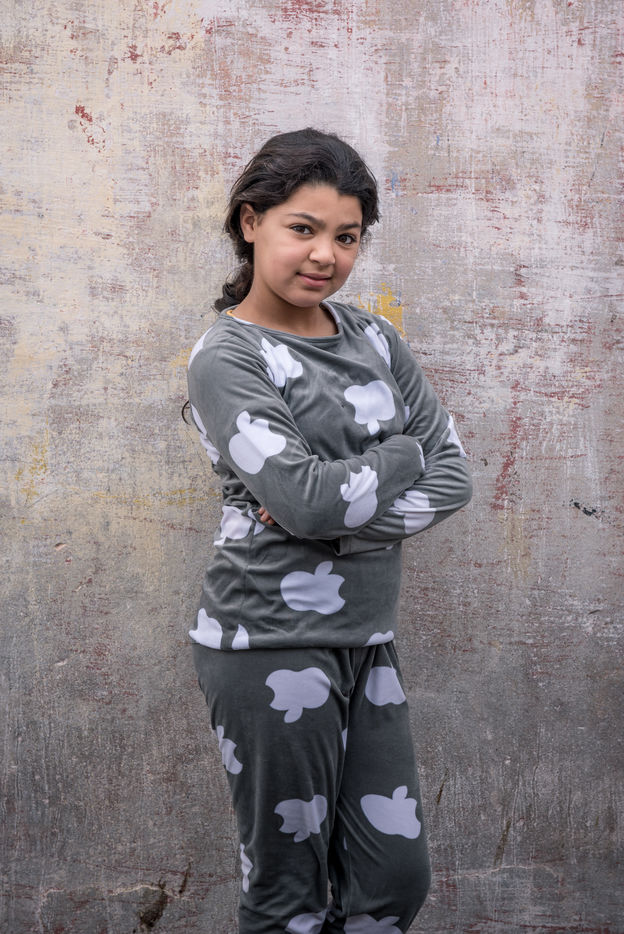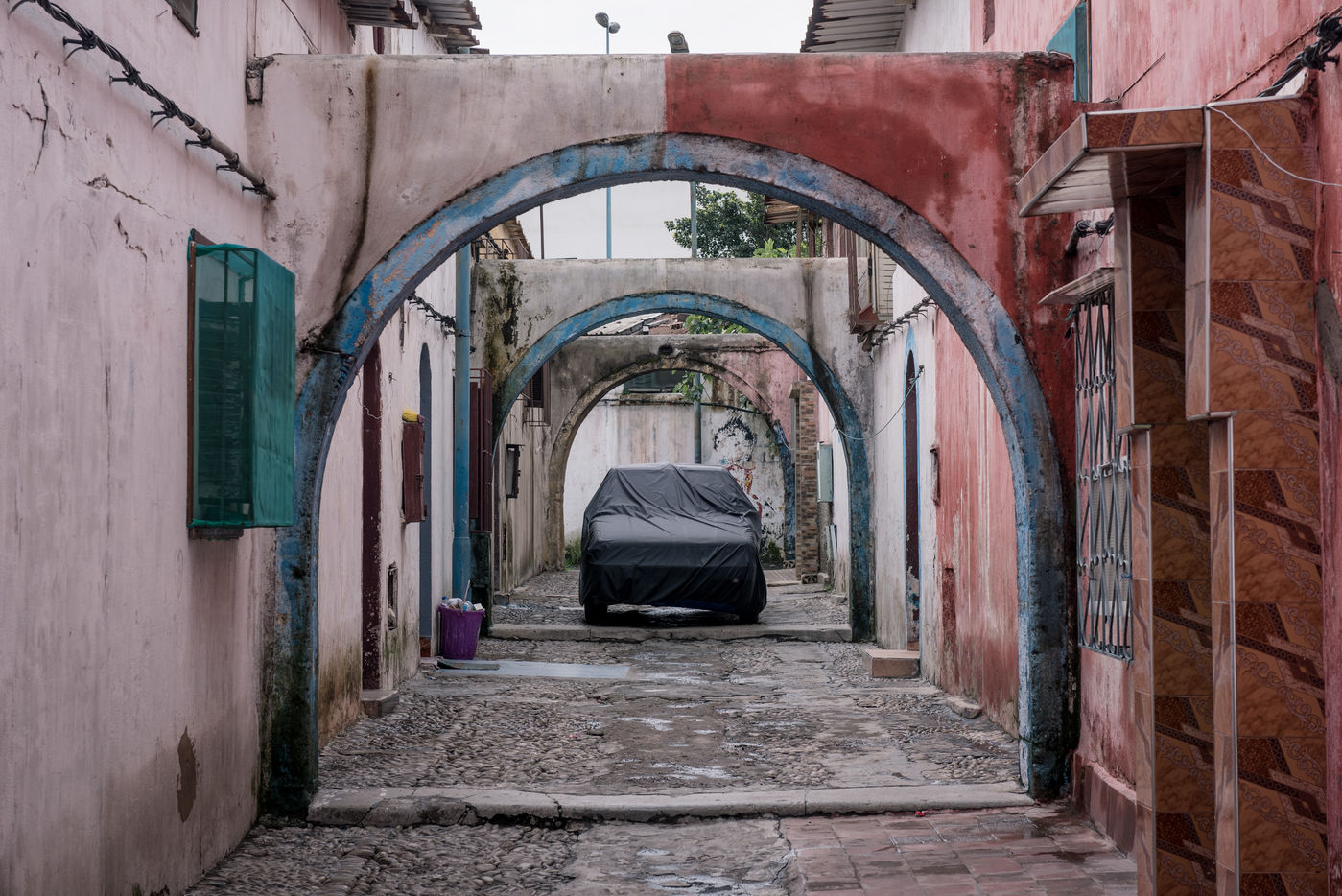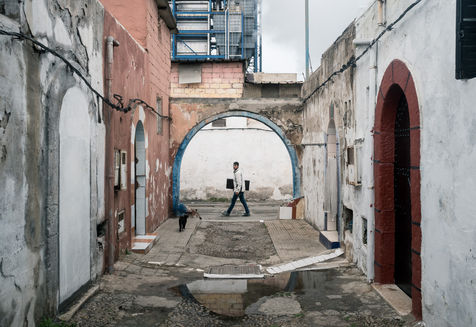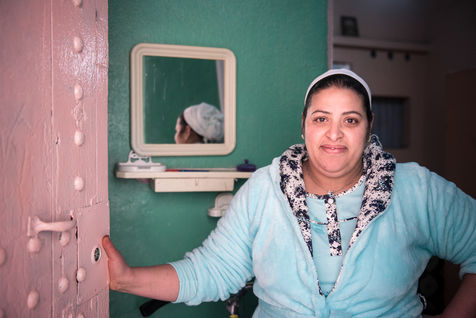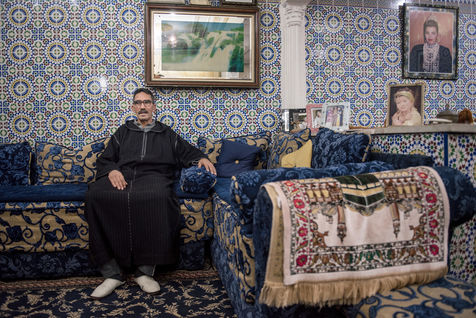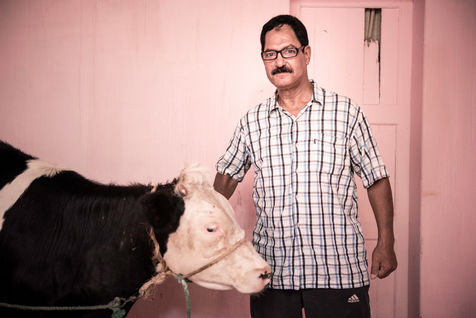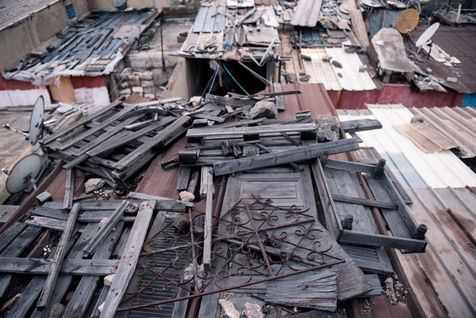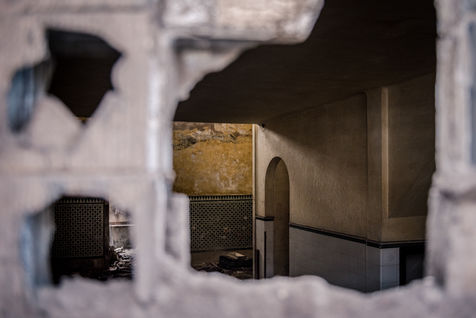COSUMAR - UNE CITE OUVRIERE EN DANGER
Cette série d'images traite de la cité ouvriere ancienne de Cosumar, créée dans les années 1930 à Casablanca par l'architecte Edmond Brion, plus connu pour son travail sur le quartier des Habous. La cité est donc un héritage de la colonisation ainsi que du paternalisme industriel : en offrant aux ouvriers méritants un logement à proximité de l'usine, l'entreprise manie la carotte et le bâton, s'offrant ainsi la possibilité d'un contrôle plus étroit de ses employés.
Bien que la cité Cosumar fasse partie du patrimoine architectural, industriel et social de Casablanca, elle ne reçoit que peu d'attention, hormis lors des journées du patrimoine de la ville. Sa mort est même théoriquement programmée puisque l'entreprise a reçu l'autorisation officielle de la raser pour étendre ses espaces de stockage. Néanmoins, cette autorisation spécifie également que l'entreprise est responsable de reloger les habitants, processus qui s'annonce long.
Ces photographies s'efforcent donc de rendre compte de la vie des habitants de Cosumar, avant une éventuelle démolition. Il s'agit de comprendre la maniere dont ceux-ci ont transformé et se sont approprié cet espace issu du paternalisme et de la période coloniale, parfois en transgressant ses codes. Réalisé en lien étroit avec les habitants et dans une perspective humaniste, ce travail a débuté en janvier 2018 et se poursuit actuellement.
COSUMAR - ENDANGERED WORKER QUARTERS
This series of pictures documents the worker quarters of Cosumar ?Morocco?s biggest sugar company, built in the 1930?s by French architect Edmond Brion in Casablanca. During this era of colonization and paternalism, the company would both reward its more deserving employees by giving them houses and control them tightly as the worker quarters are located just by the factory and has only two doors that used to get closed every evening.
Despite being an integral part of Casablanca?s urban, industrial and social heritage, Cosumar?s worker quarters don?t receive much attention and are scheduled to disappear as the company got the authorization to demolish them in order to expand the factory?s storage facilities. Nonetheless, the company will have to find a way to provide new homes for the inhabitants, which might take quite some time.
Facing this threat of demolition, this photographic body of work aims at showing the lives and homes of the inhabitants. The photographer strives to understand the ways they reshaped the worker quarters, often breaking the rules of this colonial and paternalistic project.
This project started in January 2018 and is still ongoing.
